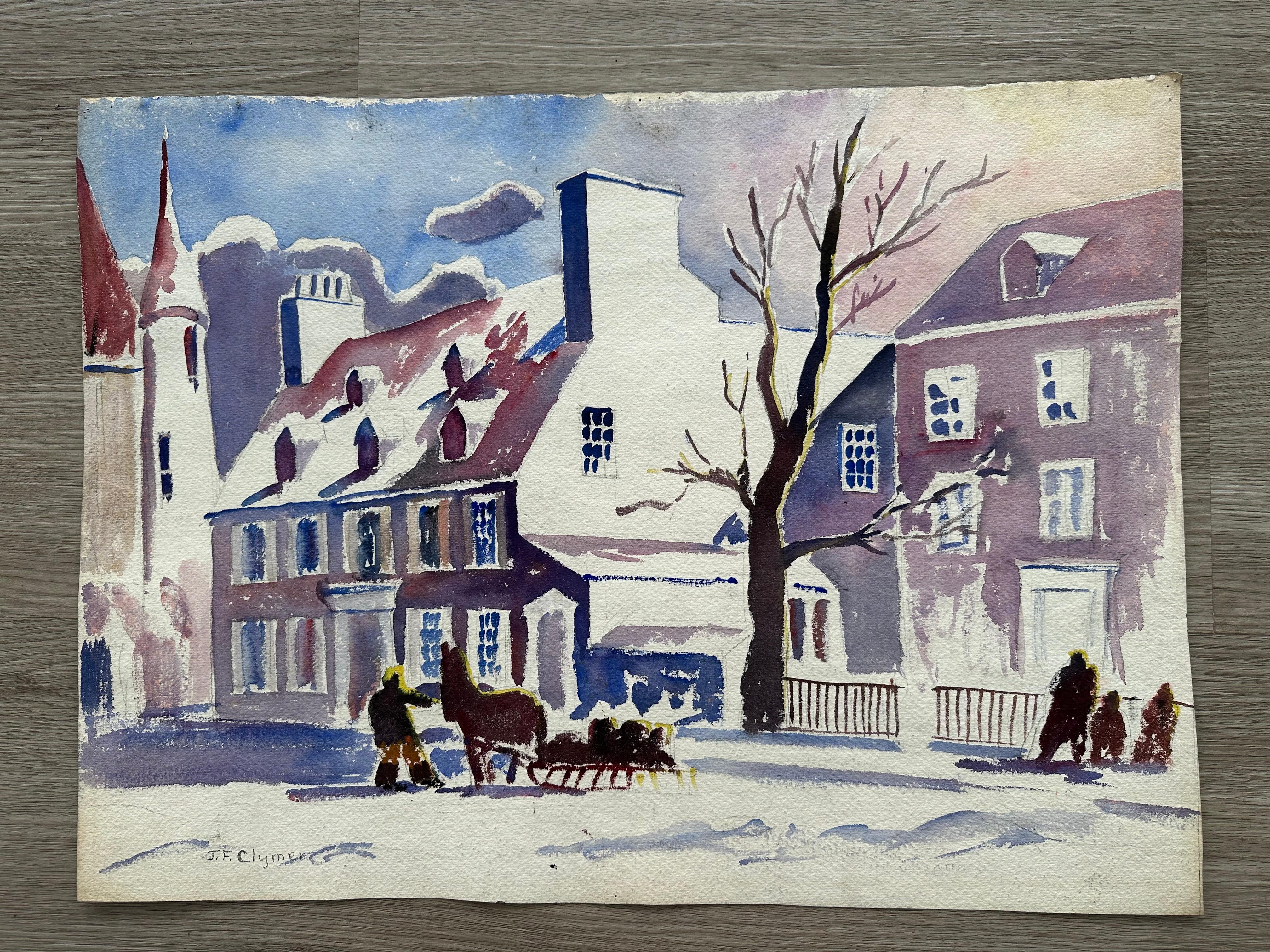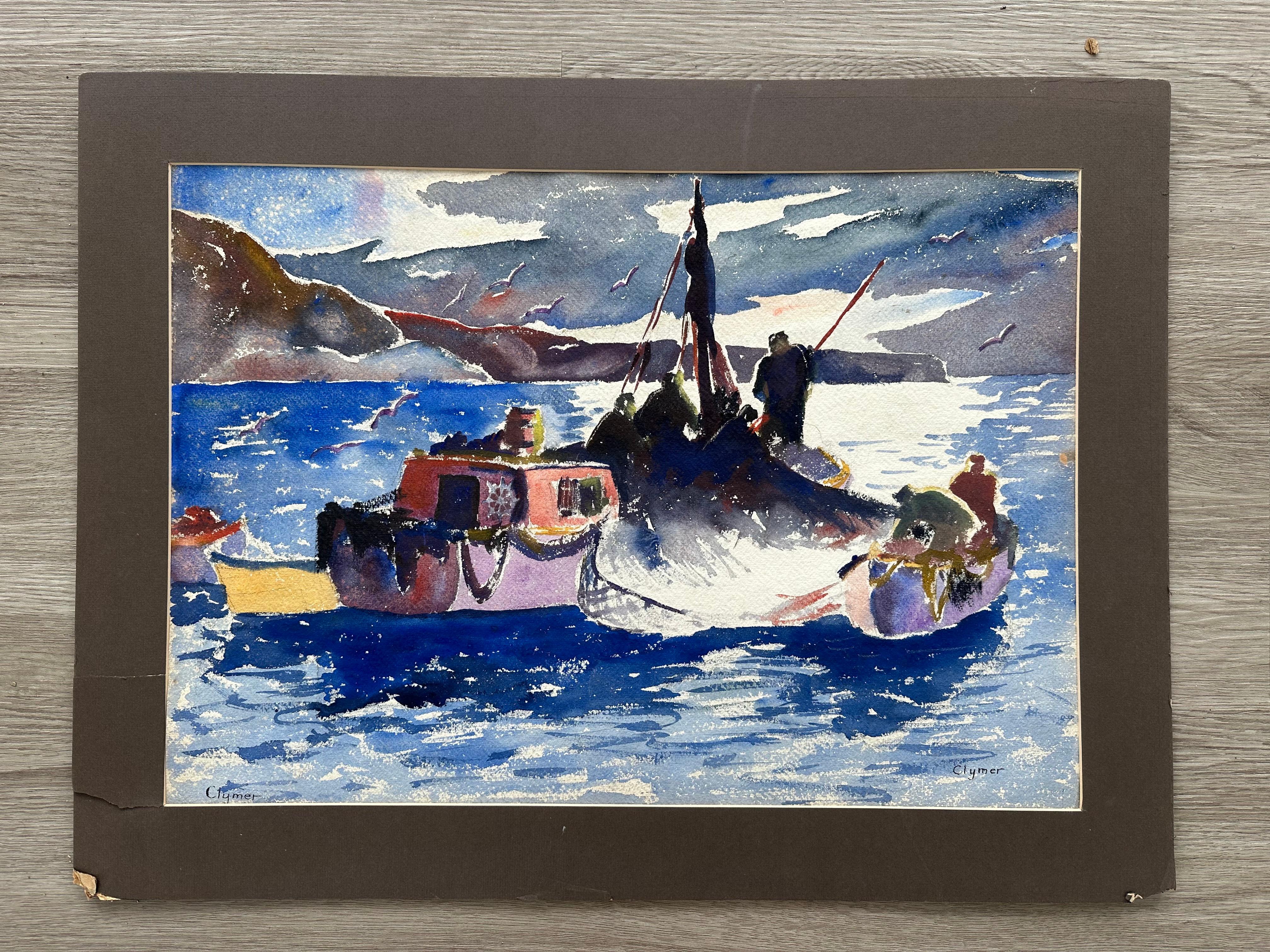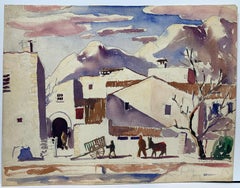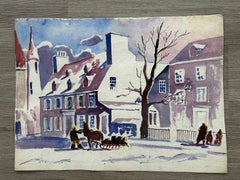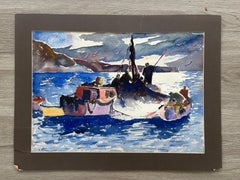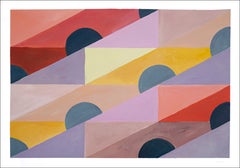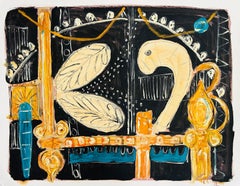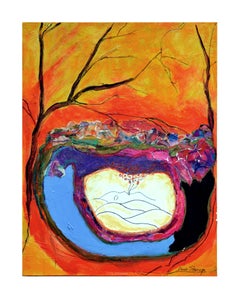James Floyd ClymerHog Scalding, Canadaca. 1930
ca. 1930
About the Item
- Creator:James Floyd Clymer (American)
- Creation Year:ca. 1930
- Dimensions:Height: 15 in (38.1 cm)Width: 20.5 in (52.07 cm)Depth: 0.01 in (0.26 mm)
- Medium:
- Movement & Style:
- Period:
- Condition:
- Gallery Location:Wilton Manors, FL
- Reference Number:1stDibs: LU245214905302
James Floyd Clymer
James Floyd Clymer known for his regionalist style of land, sea and cityscapes, created paintings with an emphasis on color and form. His works possess a clear and simple style, easily understood by the masses. Born in Perkasie Pennsylvania, 20 miles north of Philadelphia, Clymer was the youngest of seven children. Losing his mother during childbirth, he was raised by his eldest sister. He attended Drexel University in Philadelphia, studying Art and Architecture and worked as an Architect in the years following World War I. During this time, Clymer met the artist Gwenyth Waugh, daughter of the renowned marine painter, Frederick Judd Waugh. Clymer thrust then changed from Architect to Artist. Together, the couple traveled to destinations such as Spain and Newfoundland, where they gave birth to their only daughter. In the early 1920s, Clymer and family settled in Provincetown, Massachusetts and quickly became associated with notable artists such as Helen Sawyer, Edwin Dickinson and the Waughs. About 1940, Clymer moved to New York City, and in 1946, he and his family settled in a home on Schunnemunk Mountain in New York (close to Newburgh, New York, in the Hudson River Valley). He lived there until circa 1978 when he moved to his granddaughter's house near Schenectady, New York, where he later died. Clymer worked with ease in the mediums of watercolor and oil painting, much like James Fitzgerald and Marsden Hartley. Parallels exist in the work of the three artists, such as their affinity to the New England coast for their subject matter. Further, these artists pursued highly personal styles, making it difficult to link them to anyone's art movement. All three artists were adept at blending naturalism and abstraction while maintaining a respect for and a keen observation of nature. Clymer tended to depict permanence and impermanence in nature, painting simple, colorful forms to create vistas in sea and sky or mass in mountains and buildings. He then would present figures in motion, such as humans, birds and boats to complete his artistic theme. Like Hartley and Fitzgerald, Clymer's economy of detail states so much with so little, allowing the work to possess a powerful and expressive quality. Clymer was a member of the Provincetown Beachcombers Club, a select group devoted to the arts, as well as a member of the Provincetown Art Association, where he exhibited 65 works between 1922–40. His works were also featured in exhibits at the Pennsylvania Academy of Fine Arts, the Art Institute of Chicago, the Corcoran Gallery and various galleries in NYC during the 20s, 30s and 40s. Clymer is listed in Who Was Who in American Art.
- ShippingRetrieving quote...Shipping from: Wilton Manors, FL
- Return Policy
More From This Seller
View AllEarly 20th Century Abstract Abstract Paintings
Watercolor, Rag Paper, Pencil
Early 20th Century Abstract Abstract Paintings
Watercolor, Rag Paper, Pencil
Early 20th Century Abstract Abstract Paintings
Watercolor, Rag Paper, Pencil
Early 20th Century Abstract Abstract Paintings
Watercolor, Rag Paper, Pencil
Early 20th Century Abstract Abstract Paintings
Watercolor, Rag Paper, Pencil
Early 20th Century Abstract Abstract Paintings
Watercolor, Rag Paper, Pencil
You May Also Like
2010s Abstract Geometric Abstract Paintings
Watercolor, Acrylic, Rag Paper
2010s Abstract Abstract Paintings
Oil, Rag Paper
1980s Abstract Expressionist Abstract Paintings
Canvas, Ink, Acrylic, Rag Paper, Stretcher Bars
2010s Abstract Abstract Paintings
Oil, Rag Paper
2010s Abstract Expressionist Abstract Paintings
Oil, Acrylic, Rag Paper
21st Century and Contemporary Abstract Abstract Paintings
Canvas, Acrylic, Gouache, Pencil

